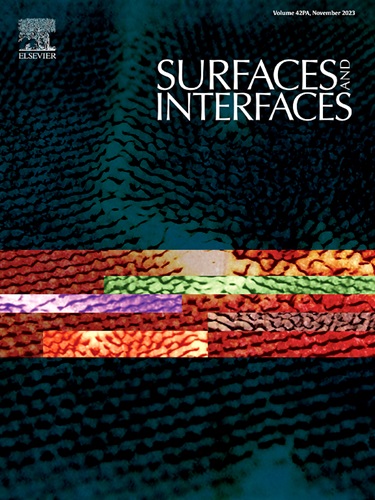A Sustainable Approach to Amoxicillin Removal: Eco-Conscious Synthesis and Characterization of Bi-Functionalized Hollow Silica Sphere as High-Performance Adsorbent and Its Adsorption Mechanisms
IF 5.7
2区 材料科学
Q2 CHEMISTRY, PHYSICAL
引用次数: 0
Abstract
In this study, we report the synthesis of an eco-friendly, high-performance adsorbent, aminoethylaminethyl-phenethyl-trimethoxysilane (AEAMPTMS)-functionalized hollow silica spheres, for effective amoxicillin removal from water. Utilizing Carex Riparia (sedge) as a green silica source, the synthesis minimizes hazardous chemicals, offering a scalable and sustainable approach. Amino/phenyl nanoporous hollow silica sphere (AP-NHSS) exhibits a high surface area (653 m2 g–1) and a bimodal micro-mesoporous structure, enhancing adsorption through electrostatic interactions, hydrogen bonding, and π-π stacking. Thermodynamic analysis reveals an exothermic adsorption process (ΔrH∘ads.=−38.13 kJ mol−1) with spontaneous Gibbs free energy values (ΔrG∘ads.=−30.22 to −29.68 kJ mol−1), indicating favorable adsorption driven by physisorption with weak chemisorptive contributions. Kinetic studies show that the Langmuir isotherm and pseudo-first-order models best describe the adsorption process, confirming monolayer adsorption and surface-controlled kinetics. AP-NHSS demonstrates a maximum capacity of 384.6 mg g–1 with a high reusability, retaining 96.4% of its initial adsorption capacity over 10 cycles. These findings highlight AP-NHSS as a promising green adsorbent, aligning with the urgent need for sustainable solutions in modern water treatment.
求助全文
约1分钟内获得全文
求助全文
来源期刊

Surfaces and Interfaces
Chemistry-General Chemistry
CiteScore
8.50
自引率
6.50%
发文量
753
审稿时长
35 days
期刊介绍:
The aim of the journal is to provide a respectful outlet for ''sound science'' papers in all research areas on surfaces and interfaces. We define sound science papers as papers that describe new and well-executed research, but that do not necessarily provide brand new insights or are merely a description of research results.
Surfaces and Interfaces publishes research papers in all fields of surface science which may not always find the right home on first submission to our Elsevier sister journals (Applied Surface, Surface and Coatings Technology, Thin Solid Films)
 求助内容:
求助内容: 应助结果提醒方式:
应助结果提醒方式:


